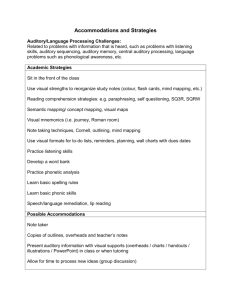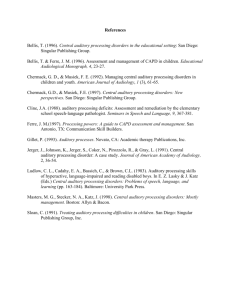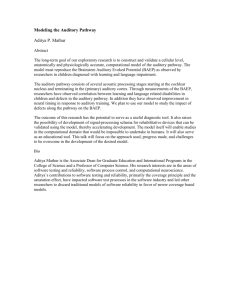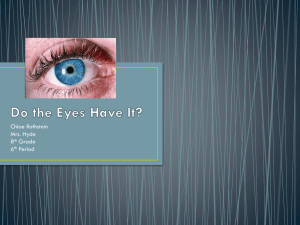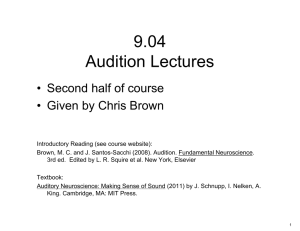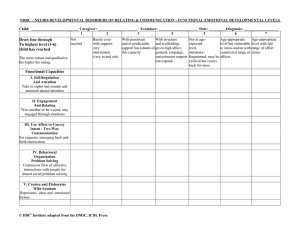Bach - Cognitive Systems Program
advertisement
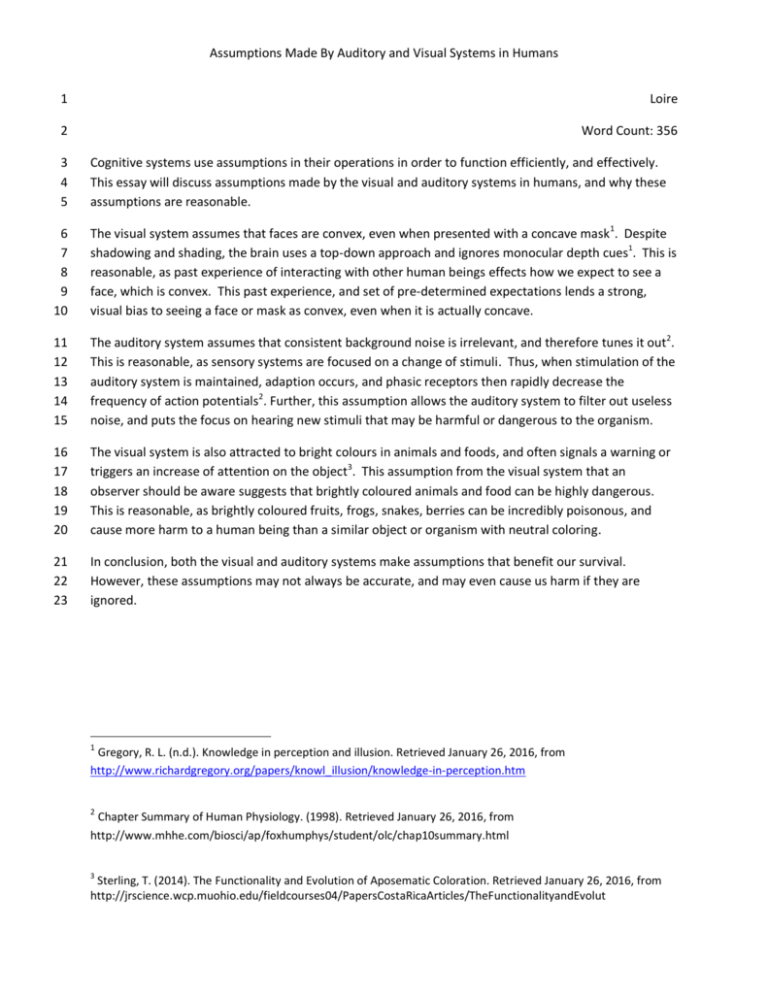
Assumptions Made By Auditory and Visual Systems in Humans 1 Loire 2 Word Count: 356 3 4 5 Cognitive systems use assumptions in their operations in order to function efficiently, and effectively. This essay will discuss assumptions made by the visual and auditory systems in humans, and why these assumptions are reasonable. 6 7 8 9 10 The visual system assumes that faces are convex, even when presented with a concave mask1. Despite shadowing and shading, the brain uses a top-down approach and ignores monocular depth cues1. This is reasonable, as past experience of interacting with other human beings effects how we expect to see a face, which is convex. This past experience, and set of pre-determined expectations lends a strong, visual bias to seeing a face or mask as convex, even when it is actually concave. 11 12 13 14 15 The auditory system assumes that consistent background noise is irrelevant, and therefore tunes it out2. This is reasonable, as sensory systems are focused on a change of stimuli. Thus, when stimulation of the auditory system is maintained, adaption occurs, and phasic receptors then rapidly decrease the frequency of action potentials2. Further, this assumption allows the auditory system to filter out useless noise, and puts the focus on hearing new stimuli that may be harmful or dangerous to the organism. 16 17 18 19 20 The visual system is also attracted to bright colours in animals and foods, and often signals a warning or triggers an increase of attention on the object3. This assumption from the visual system that an observer should be aware suggests that brightly coloured animals and food can be highly dangerous. This is reasonable, as brightly coloured fruits, frogs, snakes, berries can be incredibly poisonous, and cause more harm to a human being than a similar object or organism with neutral coloring. 21 22 23 In conclusion, both the visual and auditory systems make assumptions that benefit our survival. However, these assumptions may not always be accurate, and may even cause us harm if they are ignored. 1 Gregory, R. L. (n.d.). Knowledge in perception and illusion. Retrieved January 26, 2016, from http://www.richardgregory.org/papers/knowl_illusion/knowledge-in-perception.htm 2 Chapter Summary of Human Physiology. (1998). Retrieved January 26, 2016, from http://www.mhhe.com/biosci/ap/foxhumphys/student/olc/chap10summary.html 3 Sterling, T. (2014). The Functionality and Evolution of Aposematic Coloration. Retrieved January 26, 2016, from http://jrscience.wcp.muohio.edu/fieldcourses04/PapersCostaRicaArticles/TheFunctionalityandEvolut




